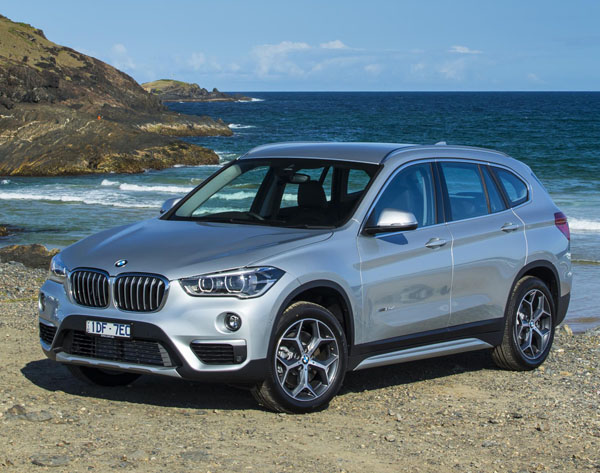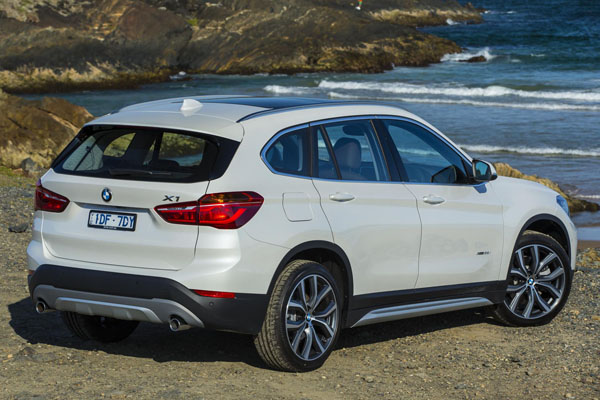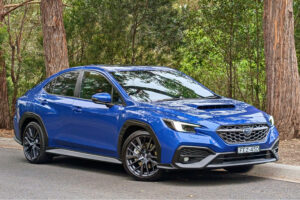It’s not unusual for a vehicle’s designer to attend new models launches when their cars arrive in Australia. So it was when the latest BMW X1 was revealed in Coffs Harbour accompanied by its Munich-based designer.
Often the designer’s presentation is delivered in broken English, sometimes even with a translator. Not so this time around because the fresh-faced designer not only spoke perfect English but did so with an Australian accent. At the age of just 29 Calvin Luk is one of the rising stars of the car design field.
Unfortunately it’s a fact of Australian life but Luk will never make the headlines to anywhere near the extent that other 20-somethings like Steven Smith and Jason Day have for their sporting achievements. While the Aussie cricket captain and the 2015 PGA champion were in their early teens learning their respective crafts young Calvin was honing his own skills by sketching cars, particularly his father’s 3 Series BMW.
By the age of 18 Luk had won a place at the Art Centre College of Design in Pasadena, California where many of the world’s best car designers, including BMW’s Chris Bangle, had studied. It was at the College that he caught the eye of BMW who took him on, first as an intern and, following his graduation (with honours), as a full-time employee at its Advanced Design Studio in Munich.
At the risk of being accused of bias we reckon the new X1 is probably the best looking X car since the launch of the first one, the X5 back in 1999. Gone is the long bonnet which gave the original X1 and its larger predecessors such an ungainly look.
The confident yet modest young Aussie has penned a vehicle that’s neater and more compact than before. At the front the kidney grille is larger and bolder and close to vertical. It’s framed by attractive twin round full LED headlights that sit above circular foglights.
Although it’s the smallest of the X models, and BMW call it a compact SUV (BMW, but nobody else, uses the name SAV for Sports Activity Vehicle), at just under 4.5 metres in length it’s still a relatively large vehicle. In fact the gen-two X1 is marginally (15 mm) shorter than the outgoing model, but is 33 mm wider and 53 mm taller.
The high driving position is a big selling point for SUVs and the extra height of the new X1 contributes to an additional 36 mm in the front seats and 64 mm in the rear for improved passenger visibility.
One major change between the first and second generation X1 is the switch from rear to front-wheel drive in the 2WD models. This contributes to a noticeable improvement to interior space including an additional 66 mm of rear legroom available (the rear seat can slide up to 130 mm for and aft) to further add to rear passenger comfort.
The rear seats have a 40/20/40 per cent split rather than the more common 60/40 in many other SUVs. This gives you more options of juggling passengers and luggage.
On the subject of luggage the boot capacity has been increased by 85 litres to a very useful 505 litres, not including additional space under the boot floor where the spare wheel isn’t (X1 relies on run-flat rubber). With the rear seat backs all folded that can be increased to 1550 litres. The tailgate is automated and can be set at different heights and opened with the optional kick function.
As before X1 comes with the choice of two-wheel drive (called sDrive) or four-wheel drive (xDrive) respectively, and with either petrol or diesel turbocharged engines.
One of the interesting facts to emerge at the launch press conference was that 92 per cent of previous X1 sales have been of the sDrive. With the new model BMW has set a target of increasing generation two xDrive sales to around 40 per cent.
All engines are 2.0-litre four-cylinder units with different outputs. We gave up trying to understand the BMW naming logic years ago. The two-wheel drive sDrive20i petrol generates 141 kW and 280 Nm and the sDrive18d diesel 110 kW and 330 Nm.
The AWD models are the xDrive25i petrol (previously xDrive28i) which is the most powerful variant with 170 kW and 350 Nm with the xDrive20d having the most torque (400 Nm) and 140 kW of power.
All engines are mated to an eight-speed automatic transmission to provide a good combination of acceleration and minimal fuel consumption in all driving conditions.
Standard safety equipment across the range includes eight airbags; Dynamic Stability Control with ABS brakes, cornering braking control, brake assist and traction control; dynamic braking lights; front and rear park distance control; active cruise control; rear view camera; lane departure warning; and forward collision and pedestrian warning with light city braking function.
Also standard within the BMW ConnectedDrive system is Intelligent Emergency Call which automatically transmits vehicle accident information via the BMW call centre to emergency services where required.
We were able to drive both the petrol and diesel xDrive models over a varied and picturesque 300-kilometre loop inland from Coffs Harbour. The route planners threw in a benign 20 km gravel section that got plenty of dust on the body but barely affected our driving style.
The X1 handled everything in its stride and drove more like a big hatchback than an SUV with something approaching the level of enjoyment that entails. Ride is marginally on the firm side but not to such an extent that it will affect comfort.
Opinions were divided between the two engines with the refinement of the petrol offset by the extra torque and greater fuel economy of the diesel. Either one will do us.
The X1 is one of BMW’s most important vehicles. Since the release of the first generation models in 2009 it has accounted for around one-third of all sales in the five-model X range.
The new bolder styling of the BMW X1 should push it further up its highly-competitive and congested market segment. Its dimensions, both inside and out, are just right for the urban buyers who will dominate sales and it comes at a price that, although above the average for its segment, should prove that’s quite acceptable for a vehicle from a prestigious brand.
The complete BMW X1 range is:
sDrive 18d 2.0-litre turbo-diesel: $49,500 (automatic)
sDrive 20i 2.0-litre twin-turbo petrol: $51,600 (automatic)
xDrive 20d 2.0-litre turbo-diesel: $56,500 (automatic)
xDrive 25i 2.0-litre twin-turbo petrol: $59,900 (automatic)
Note: These prices do not include government or dealer delivery charges. Contact your local BMW dealer for driveaway prices.












